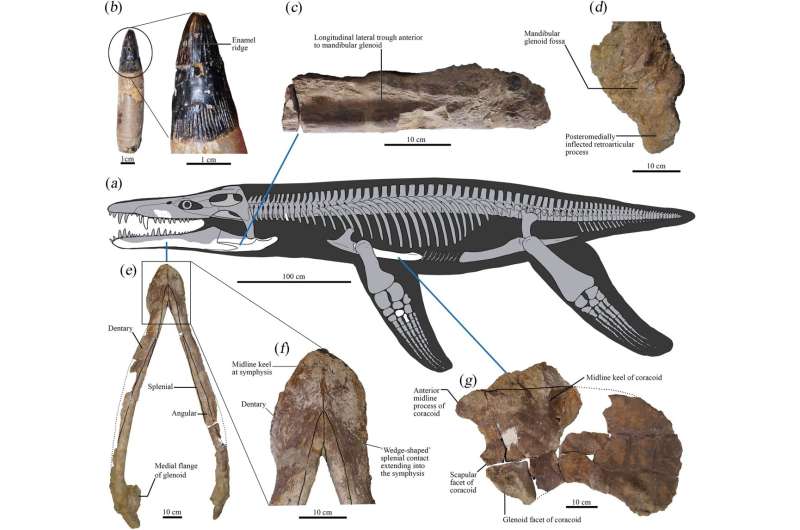New look at a Lorrainosaurus in a museum finds plesiosaurs evolved earlier than thought

A team of paleontologists from Naturkunde-Museum Bielefeld, Adenauerplatz, the Polish Academy of Sciences, Natural History Museum Luxembourg and The Museum of Evolution at Uppsala University has found through study of a Lorrainosaurus fossil residing at Luxembourg's National Museum of Natural History (MNHN) that the clade it belonged to, Plesiosauria, evolved earlier than previously thought. Their paper is published in the journal Scientific Reports.
Plesiosaurs were a clade of ancient, shark-like creatures that roamed at least one of the world's oceans millions of years ago. Their large size and alligator-like teeth earned them the nickname "sea murderers." Though fossil finds have been few, paleontologists have learned that some sub-species of large plesiosaurs grew to approximately 14.5 meters long—approximately twice as long as modern orca. They also had two pairs of side fins, allowing them to pursue prey with more dexterity than modern sharks.
In 1983, a group of amateur paleontologists discovered a plesiosaur fossil near Lorrain, France. They contacted a team at MNHN, whose members dug it up, studied it and then put it on display, where it has been ever since. In this new effort, the research team took a new look at the fossil and learned more about it and its ancestors.
The researchers began their new study after noting that the Lorrainosaurus fossil represented a new genus and gave it a new name: Lorrainosaurus. They also noted that it appeared small compared to other related fossils that have been found, at just 6 meters in length—about the length of the longest modern great whites.
In taking a closer look at its features and comparing them with other fossils that have been found, the team concluded that Lorrainosaurus was one of the earliest plesiosaurs and that it gave rise to some of the larger marine reptiles of later times. Plesiosaurs, the team notes, were an apex predator for some 80 million years.
The researchers also found evidence that plesiosaurs developed earlier than thought—as far back as the Middle Jurassic—and that they lived mostly in a part of the ocean that is now western Europe.
More information: Sven Sachs et al, The rise of macropredatory pliosaurids near the Early-Middle Jurassic transition, Scientific Reports (2023). DOI: 10.1038/s41598-023-43015-y
Journal information: Scientific Reports
© 2023 Science X Network
No comments:
Post a Comment